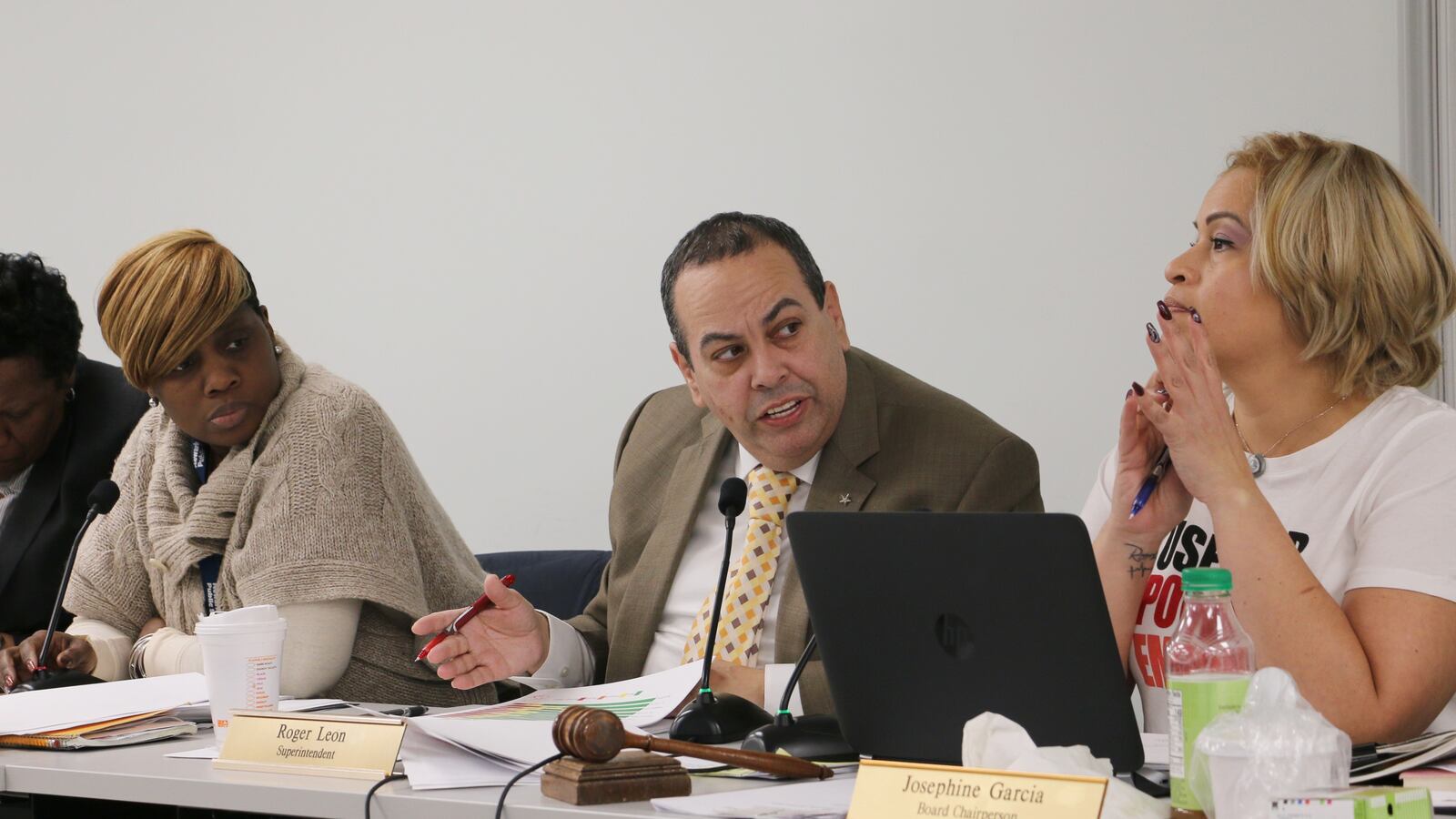Amid widespread concern about the safety of Newark’s water, school officials made public last week test results showing high lead levels in water sources at 10 district buildings out of 32 tested from August 2018 to June 2019.
The public disclosures follow recent news reports that the district had shut off water sources in several schools this year after finding elevated lead levels but did not post the test results online or notify families. State regulations require districts to publish the results of lead tests within 24 hours of reviewing them, and to inform families and school personnel when lead levels exceed federal thresholds.
“The part that we own is that these results, while they have been occurring, have not been on the web,” Superintendent Roger León said at a school board meeting last week. “The other piece is that any exceedances have not been properly communicated to folks. That stopped today.”
In addition to posting the results online, the district also sent letters to families at schools where elevated lead levels were found, León said.
Exposure to lead can cause serious health problems, including damage to children’s developing brains and nervous systems.
Earlier this month, WNYC/Gothamist and Chalkbeat separately reported on the lead test results, which were obtained through public records requests. The results showed that seven district buildings had one or more water sources with lead levels above 15 parts per billion, which is the federal threshold for taking action. The reports noted that city and district officials insisted the water was safe to drink even as the tests found several school water sources, including drinking fountains, with lead above 15 parts per billion.
The results posted on the district website last week include three additional buildings with elevated lead levels. A district spokesperson did not respond to questions Monday, including why the results provided earlier in response to the public records request appear to have been incomplete.
The buildings with high lead levels in one or more water sources were 13th Avenue, 14th Avenue, Harold Wilson, Ivy Hill, Mount Vernon, Newark Leadership Academy, Park, Peshine Avenue, Ridge Street, and West Side High School.
At three schools — 13th Avenue, 14th Avenue, and Ivy Hill — elevated lead levels were found in water samples taken from one or two drinking fountains. (All the other tested sources at those schools were below the federal lead action level.) The tests were conducted in January at Ivy Hill and in June at the other schools, the results show. In each case, the affected fountains were turned off after the samples were analyzed.
León noted at the board meeting that schools were on summer break when the high lead levels were found in two drinking fountains each at 13th Avenue and 14th Avenue. He did not address whether the affected fountains may have exposed students and staff to high lead levels during the school year.
The water sources with high lead levels at the other seven buildings were not used for drinking, but were located in areas such as kitchens and nurses’ offices. In those cases, filters were installed or signs were posted above sinks saying, “Safe for Handwashing Only.”
Two of those schools — Newark Leadership Academy and Harold Wilson — have been closed for years, but officials plan to reopen both buildings. The district had hoped to relocate a high school to Newark Leadership Academy’s former building at 301 West Kinney this September, but scrapped those plans because renovations were not complete.
León said the district is working to make sure the buildings’ water is clear of lead before reopening them.
“Those two locations we actually want to bring them online,” he told the board. “One definitely during the course of this year.”
Newark has been in the grip of a water crisis for the past year after elevated lead levels were found in some homes, leading the city to distribute water filters and eventually bottled water. Mayor Ras Baraka has defended the city’s response, which includes a long-term plan to replace thousands of lead pipes. But some residents and advocates have accused officials of downplaying the extent of the lead problem.
The district faced similar criticism this month after it was revealed that officials had not disclosed the findings of high lead levels in water sources at a few schools earlier this year. At last week’s board meeting, León accepted responsibility for the delayed disclosures. But he also emphasized that the vast majority of school water sources that have been recently tested show little or no lead.
“The rest of the whole entire district: The filters that we’re using are obviously working,” León said. “We’re extremely excited about that.”
Those filters were installed, and pipes replaced, after high lead levels were found in the water at more than 30 schools in 2016. As León noted, the remediation efforts appear to be working. Of the several hundred district water sources tested since August 2018, fewer than 20 had lead levels above the federal standard for taking action, according to the district’s data.
Whether the rest of schools are also in good shape remains to be seen.
Newark tests some schools for lead each year, which is more often than required by state rules. The most recent tests covered about half of the district’s schools. District officials have not said publicly when the other schools will be tested and their results posted online.
The database below shows the results of school lead tests conducted from August 2018 to June 2019. School water sources in red had lead levels above 15 parts per billion (ppb), the federal action level.
Database: Sam Park/Chalkbeat. Source: Newark Public Schools.

